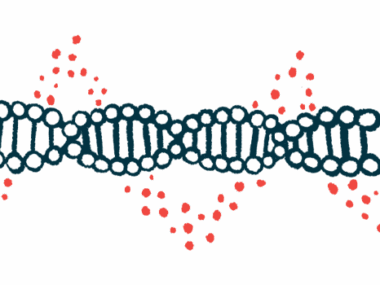FDA approves lovo-cel, now Lyfgenia, for sickle cell disease
Bluebird Bio's application was based on data from 36 SCD patients in HGB-206
Written by |

Note: This story was updated Dec. 12, 2023, to clarify that Lyfgenia treats vaso-occlusive events (VOEs), including painful vaso-occlusive crises (VOCs).
The U.S. Food and Drug Administration (FDA) has approved lovotibeglogene autotemcel, a gene therapy from Bluebird Bio known as lovo-cel, for treating sickle cell disease (SCD) patients ages 12 and older who have a history of vaso-occlusive events (VOEs), including painful vaso-occlusive crises (VOCs), acute chest syndrome, and other sickle cell-related complications.
The therapy will be marketed as Lyfgenia. Regulators agreed to look at the application under priority review in June, shortening the review period from about 10 to six months.
“Bringing Lyfgenia to people living with sickle cell disease is a milestone that Bluebird has been working toward for almost a decade — and one that members of the sickle cell disease community have been waiting on for much longer,” Andrew Obenshain, Bluebird’s CEO, said in a company press release. “Lyfgenia has the potential to have a transformational impact for patients who currently live under the shadow of unpredictable and debilitating vaso-occlusive events.”
The treatment was approved along with Casgevy (exagamglogene autotemcel), another gene therapy from Vertex Pharmaceuticals and CRISPR Therapeutics. They are the first cell-based gene therapies to earn approval for SCD in the U.S.
“These approvals represent an important medical advance with the use of innovative cell-based gene therapies to target potentially devastating diseases and improve public health,” Peter Marks, MD, PhD, director of the FDA’s Center for Biologics Evaluation and Research, said in a press release. “Today’s actions follow rigorous evaluations of the scientific and clinical data needed to support approval, reflecting the FDA’s commitment to facilitating development of safe and effective treatments for conditions with severe impacts on human health.”
How does Lyfgenia work in sickle cell disease?
The HBB gene encodes a subunit of hemoglobin, the protein that helps red blood cells carry oxygen in the body. In SCD, mutations in that gene lead to a faulty version of hemoglobin, dubbed hemoglobin S, being produced that clumps up in red blood cells and causes them to take on a sickle-like shape, becoming more sticky and rigid than normal. This can restrict blood flow and compromise the transport of oxygen to certain tissues, increasing the risk of painful VOCs due to oxygen deprivation.
Previously known as LentiGlobin, Lyfgenia is designed to provide patients with a modified version of the HBB gene that’s able to produce a form of hemoglobin (HbAT87Q) that’s resistant to clumping or sickling. This is expected to lead to less hemoglobin S and fewer sickled red blood cells, thereby easing SCD symptoms.
As part of the treatment, a patient’s hematopoietic stem cells — the precursors to all mature blood cells — are collected and treated with the gene therapy. The engineered cells are returned to the patient via a stem cell transplant after a round of chemotherapy to eliminate unhealthy cells and make room for the modified ones that are expected to repopulate the blood with healthy hemoglobin-producing cells.
Bluebird has touted Lyfgenia as the most “deeply studied” gene therapy being developed for SCD, “with the most patients treated and longest follow-up.”
The company’s application to the FDA, submitted in April, was based largely on efficacy data from 36 SCD patients participating in an ongoing Phase 1/2 clinical trial called HGB-206 (NCT02140554). All the patients, ages 12-50, were treated with the gene therapy.
Of the 32 patients evaluated for the mains goals of complete VOEs and severe VOE resolution in the 6-18 months after dosing, 30 (94%) saw a complete resolution of severe VOEs and 28 (88.2%) had none at all.
Safety data covered 54 patients who had initiated the process of stem cell collection. The most common side effects included sores of the lips, mouth, and throat, or stomatitis, and low platelet, red, and white blood cell counts.
Some patients given Lyfgenia developed leukemia, a type of blood cancer. Lyfgenia’s prescribing information includes a black box warning for hematologic malignancy (blood cancer). Patients receiving the gene therapy should have lifelong monitoring for such cancers.






